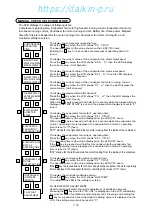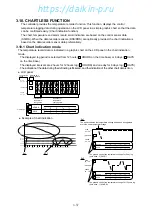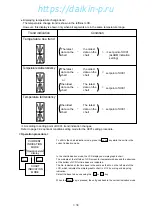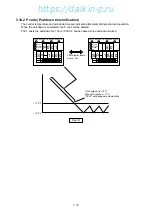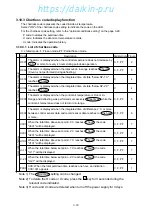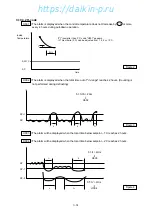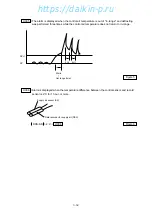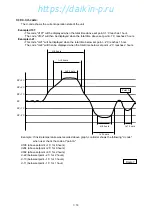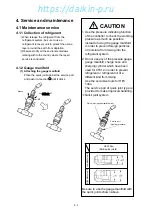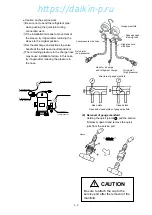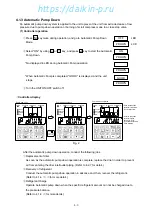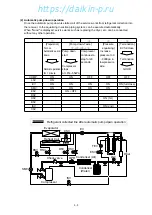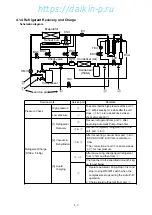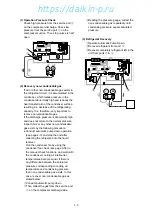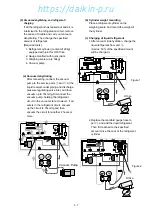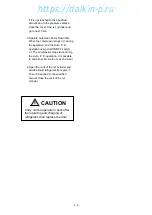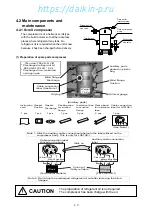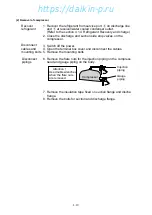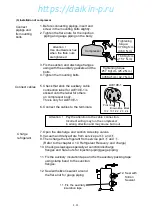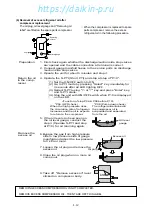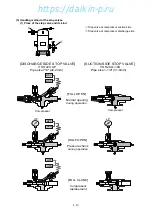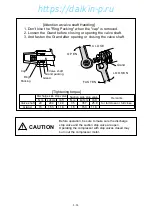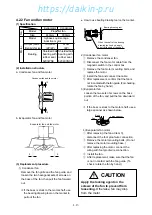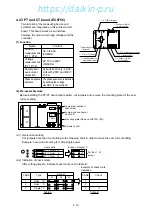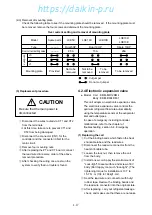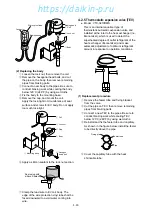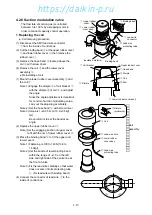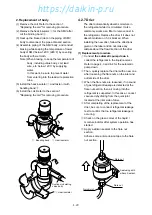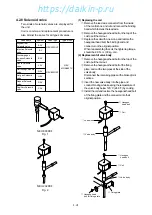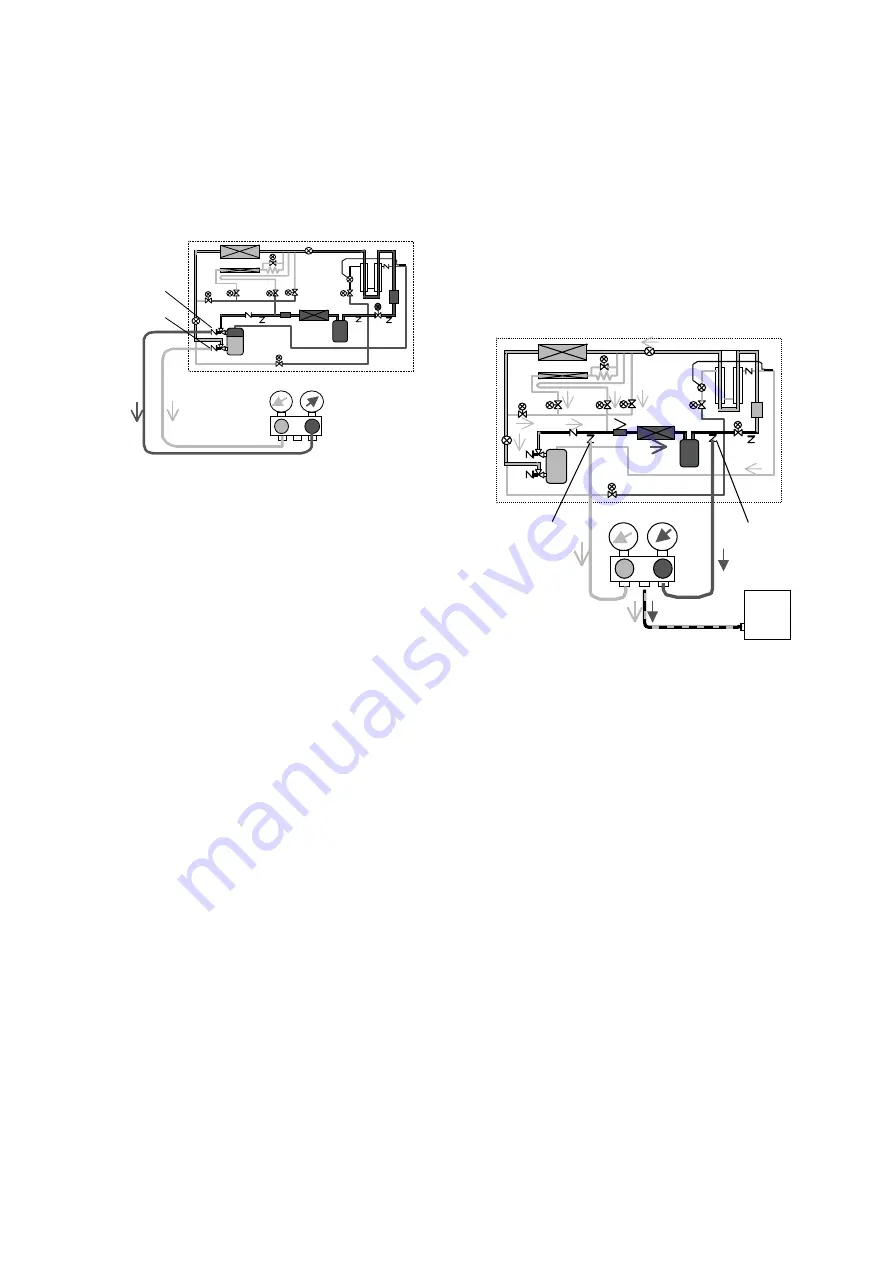
4-6
(1) Operation Pressure Check
Check high pressure from the service port
w
on the compressor discharge. Check low
pressure from the service port
q
on the
compressor suction. Then stop valves is half
open.
(2) Recovery non-condensable gas
If air or other non-condensable gas exists in
the refrigerant circuit, it is accumulated in the
condenser, which raises pressure in the
condenser abnormally high and reduces the
heat transfer ratio of the condenser surface
resulting in a decrease of the refrigerating
capacity. It is, therefore, very important to
remove non-condensable gas.
If the discharge pressure is abnormally high
and does not return to the normal pressure,
inspect if air or any other non-condensable
gas exists by the following procedure.
●
Conduct automatic pump down operation
(see page 4-3) and stop the unit after
collecting the refrigerant into the liquid
receiver.
Run the condenser fan by using the
condenser fan check (see page 3-56) in
the manual check functions, and wait untill
the condenser cooling air inlet/outlet
temperatures become equal. If there is
any difference between the saturated
pressure corresponding to cooling air
temperature and condensing pressure,
then non-condensable gas exists. In this
case, recover non-condensable gas as
stated below.
q
Conduct automatic pump down
w
Then collect the gas from the service port
w
on the compressor discharge side.
e
Reading the pressure gauge, collect the
non-condensable gas repeatedly until
condensing pressure equals saturated
pressure.
(3) Refrigerant Recovery
q
Operate Automatic Pump Dpwn.
w
Recover refrigerant from port
t
.
e
Recover completely refrigerant left in the
unit from ports
r
&
t
.
⑤
④
L
①
②
LP HP
https://daikin-p.ru
Содержание LXE10E-1
Страница 161: ...7 9 https daikin p ru ...
Страница 162: ...7 14 Schematic wiring diagram LXE10E 1 7 10 https daikin p ru ...
Страница 163: ...7 15 Stereoscopic wiring diagram LXE10E 1 7 11 https daikin p ru ...

